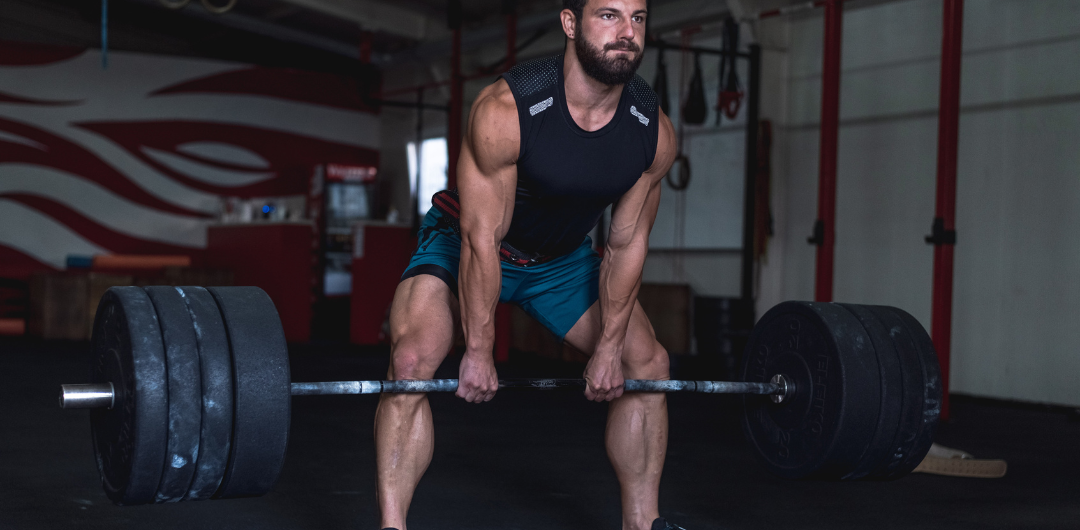
Leg Workouts: The 15 Best Leg Exercises, and How to Plan a Leg Day
No fitness program is complete without including leg workouts. Sadly, the lower body is often neglected as many people prioritize upper-body workouts.
Neglecting leg workout can lead to muscle imbalances, poor posture, and even injuries.
For those seeking to strengthen and sculpt their lower body, this article provides valuable insights. Our comprehensive guide includes the most effective leg workouts, how to structure your leg day, and advice to help you achieve optimal results.
Whether you're a beginner or an experienced gym-goer, you'll find valuable information to help you reach your fitness goals.
The Anatomy of the Legs
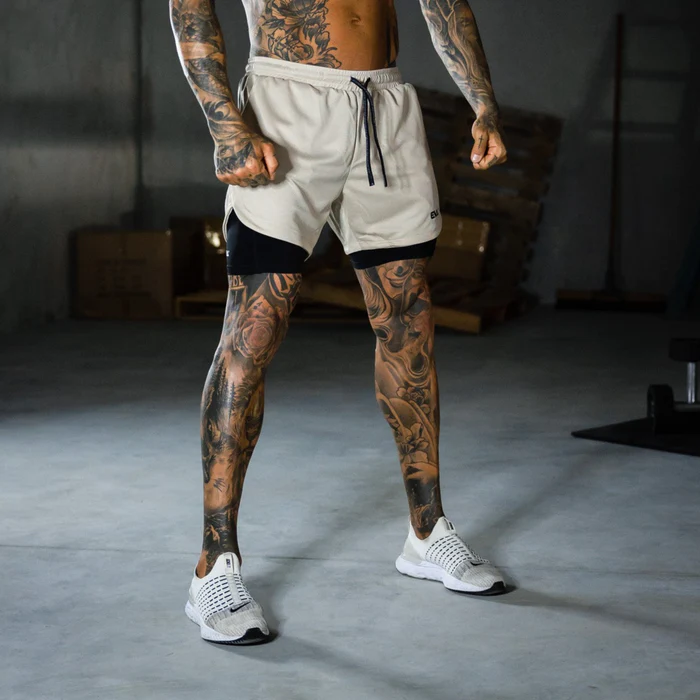
Understanding the anatomy of the legs is important before discovering the best leg exercises.
It’s essential to have a clear understanding of the several muscles of your legs to ensure you’re doing the right workouts and with the right intensity.
Quadriceps
The largest muscles in the legs, quads or quadriceps, are situated at the frontal part of the thigh.
Walking, running, jumping, and squatting all require a significant contribution to daily life activities.
Strengthening the quadriceps will help you move faster and more efficiently while also reducing the risk of knee injuries.
Hamstrings
The hamstrings have a counteraction to the quadriceps. The knee and hip joints must bend and flex to walk, run, or jump without issues.
Developing strong hamstrings is essential for aesthetics, improving overall lower body strength, and reducing the risk of hamstring injuries.
Glutes
Hip extension and rotation are mainly facilitated by the gluteal muscles found in the buttocks.
Supporting the lower back, enhancing athletic performance, and maintaining proper posture are all significant functions that these muscles serve.
A well-trained gluteal muscle group will also improve hip mobility, reduce lower back pain, and prevent knee injuries.
Calves
Ankle extension and plantar flexion are the functions of muscles in the lower leg's back.
To excel in running and jumping activities like basketball, soccer, and track and field, it is crucial to develop strong calf muscles.
Strong calves will also provide excellent stability and balance during exercises such as squats and lunges.
5 Benefits of a Regular and Consistent Leg Day
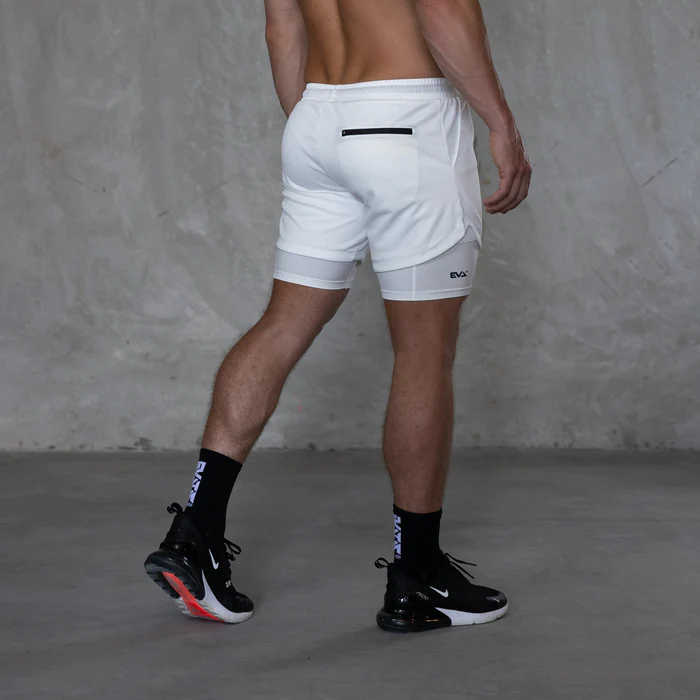
Leg day is not just about getting a set of toned and shapely legs; it also offers a host of benefits for your overall health and fitness.
Here are some reasons why you should consider making leg day a regular part of your workout routine:
Improved Mobility and Functionality
Strong leg muscles are essential for everyday movements like walking, climbing stairs, and even getting up from a chair.
Regular leg workouts can help improve your balance and coordination, making it easier for you to perform daily activities.
Increased Calorie Burn
Leg exercises are among the most calorie-burning exercises you can do.
The larger muscles in your legs require more energy to work, which means that incorporating leg day into your fitness routine can help you burn more calories and fat.
Enhanced Muscle Definition
A well-rounded leg workout can target different muscle groups in your legs, including your quads, hamstrings, glutes, and calves.
You can achieve a toned and defined lower body as you build muscle in these areas.
Improved Posture
Strong legs are essential for maintaining good posture. Neglecting your leg workouts can lead to muscle imbalances, which can cause poor posture and even back pain.
Regularly targeting your leg muscles can improve your overall posture and alignment.
Improved Athletic Performance
Whether you are a runner, cyclist, or a weekend sports enthusiast, having strong leg muscles can enhance your performance in sports and other physical activities.
By including leg day into your workout routine, you can reap these benefits and achieve a healthier, fitter, and more functional body.
Best Leg Exercises For An Effective Leg Workout

Leg workouts are an essential part of any fitness routine.
Whether you're looking to build strength, increase endurance, or just tone your legs, it's important to incorporate a variety of exercises into your leg routine.
Here are 15 of the best leg exercises for an effective leg workout.
1. Jump Rope
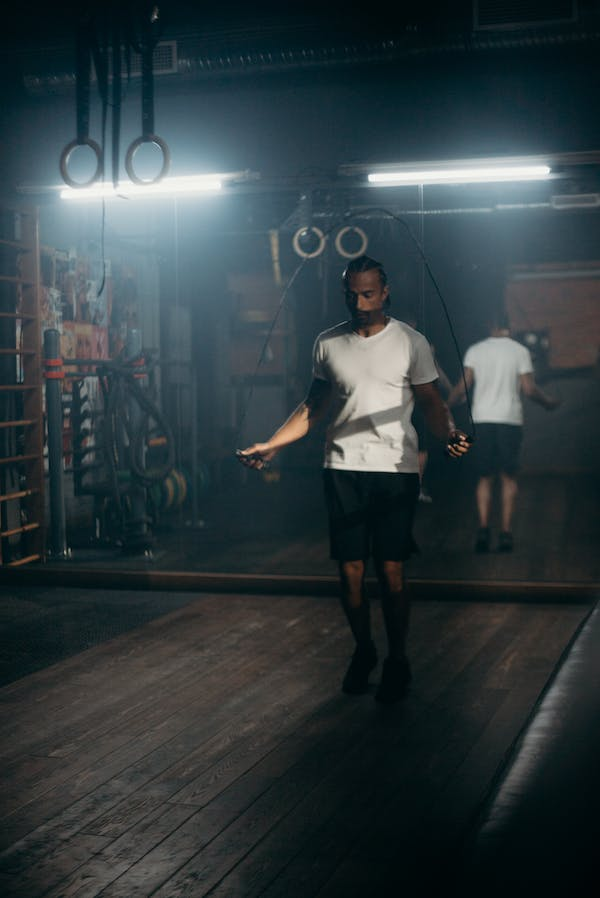
Jump rope is an excellent exercise for targeting the lower body, including the calves, hamstrings, and quads.
It also provides a cardiovascular workout and helps improve coordination and agility.
Benefits and Expected Results
-
Helps build endurance
-
Burns calories
-
Improves coordination and agility
-
Builds lower body strength
-
Can be done anywhere with minimal equipment
Standard Counts and Frequency
-
Aim for 3-5 sets of 1-2 minutes each
-
Include jump rope in your routine 2-3 times per week
How to Do the Jump Rope
-
Hold the handles of the jump rope and stand with your feet shoulder-width apart.
-
Swing the rope over your head and jump over it as it passes under your feet.
-
Keep your elbows close to your sides, and use your wrists to turn the rope.
-
Land softly on the balls of your feet and repeat.
2. Walking Lunge
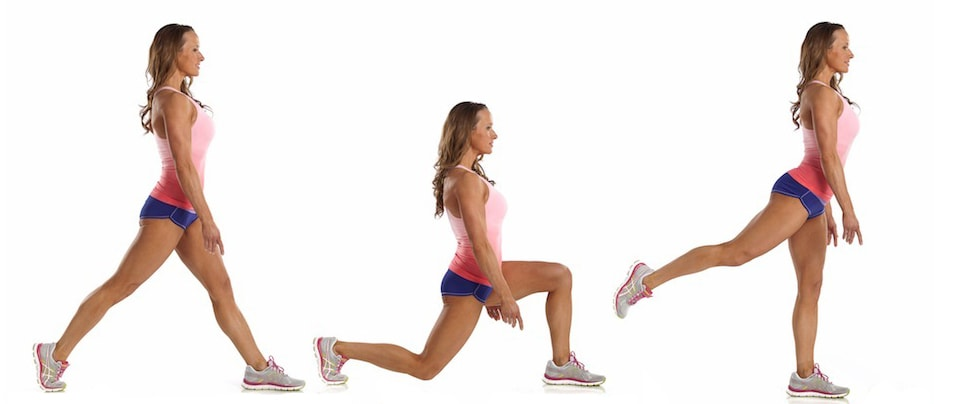
The walking lunge is a compound exercise that targets the glutes, hamstrings, and quads. It also helps improve balance and coordination.
Benefits and Expected Results
-
Helps build lower body strength
-
Improves balance and coordination
-
Can be done anywhere with minimal equipment
Standard Counts and Frequency
-
Aim for 3 sets of 10-12 lunges on each leg
-
Include walking lunges in your routine 2-3 times per week
How to Do the Walking Lunge
-
Start by standing with your feet hip-width apart.
-
Take a large step forward with your right foot and lower your body until your right knee is bent at a 90-degree angle.
-
Keep your left foot in place and then step forward with your left foot and lower your body until your left knee is bent at a 90-degree angle.
-
Keep alternating legs as you walk forward.
3. Landmine Goblet Squat

The landmine goblet squat is a variation of the traditional squat that targets the quads, glutes, and core.
Benefits and Expected Results
-
Helps build lower body strength
-
Targets the core for added stability and balance
-
Can be done with minimal equipment
Standard Counts and Frequency
-
Aim for 3 sets of 10-12 squats
-
Include landmine goblet squats in your routine 1-2 times per week
How to Do the Landmine Goblet Squat
-
Stand facing the landmine with your feet at shoulder-width apart.
-
Hold the end of the barbell with both hands at chest height.
-
Lower your body into a squat position, keeping your back straight and your knees behind your toes.
-
Push through your heels to stand back up to the starting position.
4. Barbell Hip Thrust
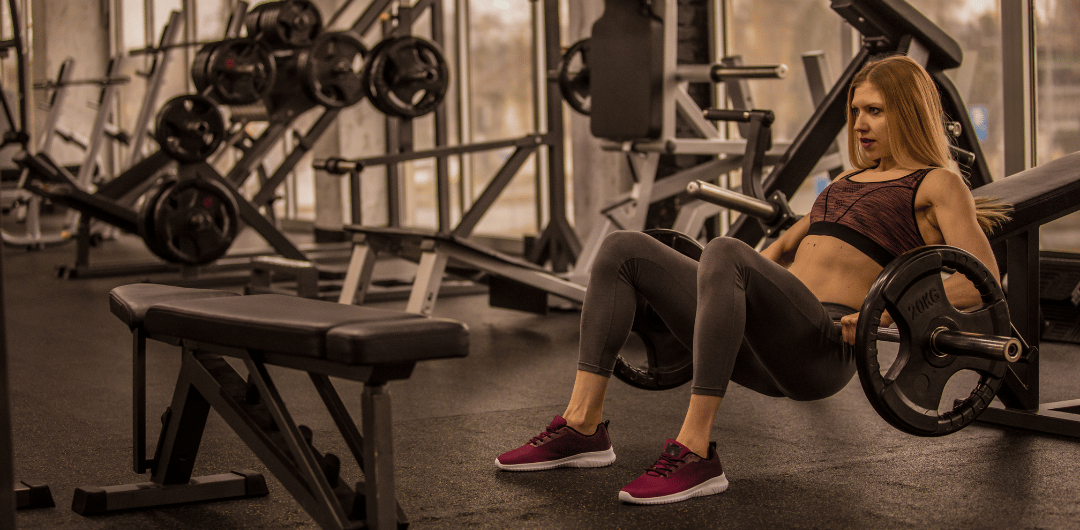
The Barbell Hip Thrust targets the glutes (specifically, the gluteus maximus), hamstrings, and lower back muscles.
With regular practice, you can expect to see improvements in your squat, deadlift, and other lower body exercises.
Benefits and Expected Results
-
Increased glute activation and strength
-
Improved hip extension
-
Reduced risk of injury
-
Enhanced athletic performance.
Standard Counts and Frequency
-
Perform 3-4 sets of 8-12 reps
-
1-2 times per week
How to Do the Barbell Hip Thrust
-
Begin seated on the ground with a barbell resting on your hips.
-
Place your feet flat on the ground and engage your glutes to lift your hips up towards the ceiling.
-
Keep your chin tucked towards your chest and your core engaged in maintaining proper form.
-
Lower your hips back down to the ground and repeat for the desired number of reps.
5. Romanian Deadlift (Barbell)
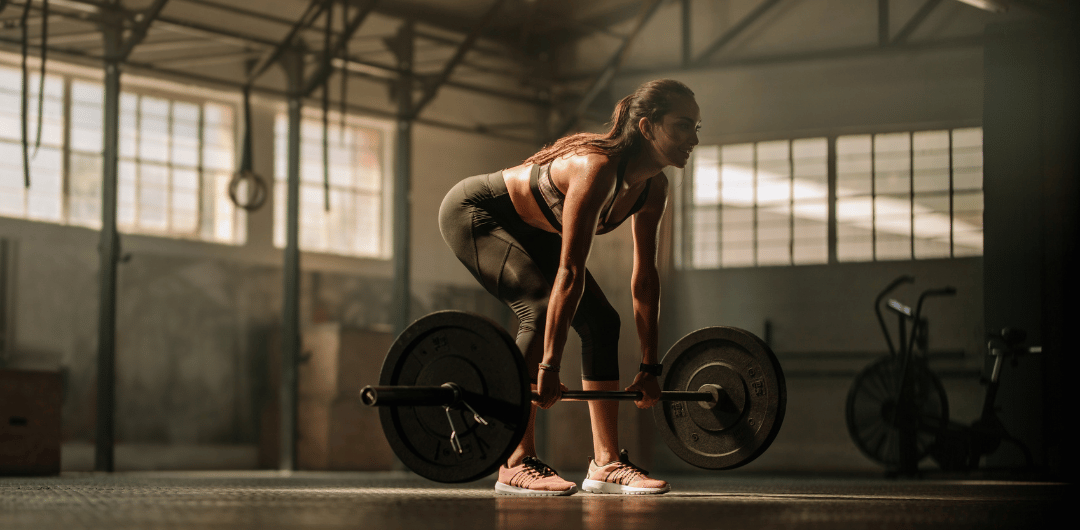
This leg workout targets your hamstrings, glutes, lower back, core muscles, and forearms.
Benefits/Expected Results
-
Improves posterior chain strength
-
Builds muscle in the hamstrings, glutes, and lower back
-
Enhances overall hip mobility and stability
-
Helps prevent lower back pain
-
Improves deadlifting technique
Standard Counts and Frequency
-
3-4 sets of 6-12 reps
-
1-2 times per week
How to do the Romanian Deadlift (Barbell)
-
Begin by standing with your feet shoulder-width apart and your toes pointing forward.
-
Grab the barbell with an overhand grip, hands shoulder-width apart.
-
Keep your back straight and engage your core as you hinge forward at the hips, pushing your butt back and lowering the barbell towards the ground.
-
Lower the bar until you feel a stretch in your hamstrings, then slowly return to the starting position by squeezing your glutes and hamstrings.
-
Repeat for the desired number of reps.
6. Seated Leg Press
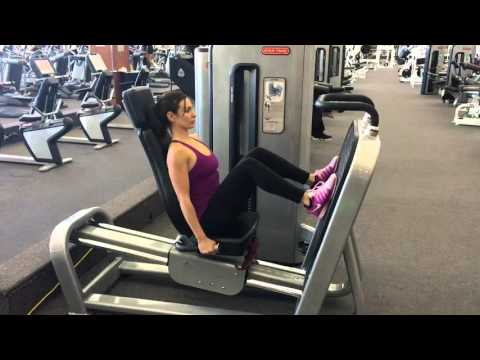
The Seated Leg Press is an exercise that involves pressing a weighted sled with your legs while seated in a machine.
It primarily targets the quadriceps, hamstrings, and glutes and can help improve lower body strength and muscle tone.
Benefits/Expected Results
-
Builds leg strength and muscle
-
Improves lower body power and explosiveness
-
Helps with overall lower-body muscle endurance
-
Can assist in improving squats and deadlifts
Standard Counts and Frequency
-
3-4 sets of 10-15 reps
-
1-2 times per week
How to do the Seated Leg Press
-
Sit in the leg and press machine with your back flat against the backrest and your feet shoulder-width apart on the footplate.
-
Release the safety bars and slowly lower the weight by bending your knees until your thighs are parallel to the ground.
-
Push the weight back up to the starting position by extending your legs fully.
-
Repeat for the desired number of reps.
7. Hack Squat
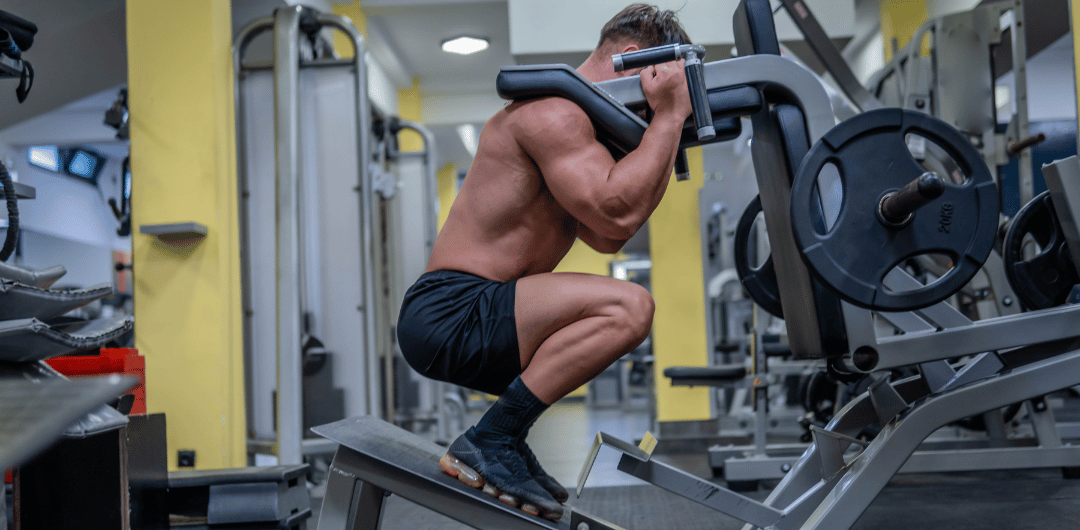
Hack Squat is a strength training exercise that targets the lower body, specifically the quadriceps, glutes, and hamstrings.
It involves a weighted sled and a machine that allows you to perform squats while standing upright with the weight behind you.
Benefits/Expected Results
-
Builds leg strength and muscle
-
Increases overall lower body power and explosiveness
-
Enhances muscle endurance in the legs
-
Can help improve squats and deadlifts
Standard Counts and Frequency
-
3-4 sets of 8-12 reps
-
1-2 times per week
How to do the Hack Squat
-
Stand with your feet shoulder-width apart and place a barbell behind your legs.
-
Squat down and grip the barbell with your hands shoulder-width apart.
-
Straighten your legs and lift the barbell off the ground while keeping your back straight.
-
Lower the weight by bending your knees until your thighs are parallel to the ground.
-
Push the weight back up to the starting position by extending your legs fully.
-
Repeat for the desired number of reps.
8. Reverse Lunge
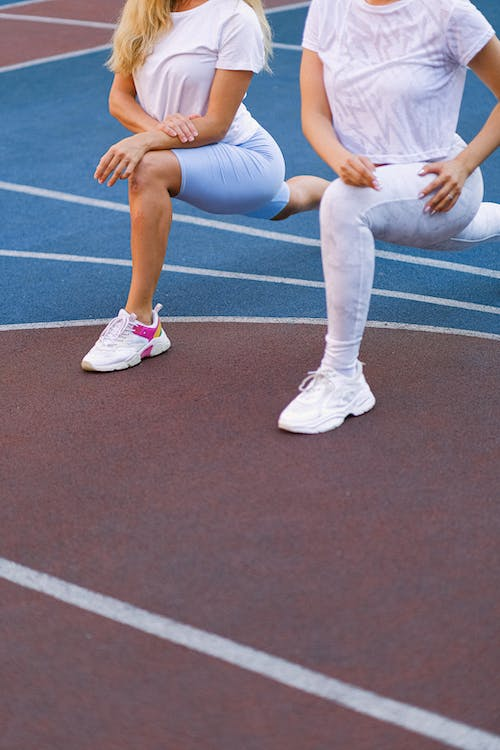
The Reverse Lunge is a lower body exercise that targets the glutes, hamstrings, quads, and calves.
It involves stepping backward with one foot and lowering the body until the front knee is bent at a 90-degree angle.
Benefits/Expected Results
-
Increased lower body strength
-
Improved balance and stability
-
Improved hip mobility
-
Reduced risk of injury
-
Increased calorie burn
Standard Counts and Frequency
-
2-3 sets of 10-12 reps per leg
-
2-3 times per week
How to Do the Reverse Lunge
-
Stand with feet hip-width apart, hands on hips or holding dumbbells at your sides.
-
Step back with your left foot and lower your body until your right knee is bent at a 90-degree angle.
-
Keep your weight in your right heel and your chest up.
-
Push through your right heel to return to the starting position.
-
Repeat on the other leg.
9. Bulgarian Split Squat

The Bulgarian Split Squat is a unilateral lower-body exercise that targets the glutes, quadriceps, and hamstrings while also improving balance and stability.
It involves stepping forward with one leg while lowering the body down until the back knee touches or almost touches the ground.
Benefits/Expected Results
-
Increased lower body strength
-
Improved balance and stability
-
Improved hip mobility
-
Reduced risk of injury
-
Increased calorie burn
Standard Counts and Frequency
-
2-3 sets of 10-12 reps per leg
-
1-2 times per week
How to Do the Bulgarian Split Squat
-
Stand with your back facing a bench or step and your feet hip-width apart.
-
Place your left foot on the bench or step behind you with your toes pointing down.
-
Lower your body until your right knee is bent at a 90-degree angle.
-
Keep your weight in your right heel and your chest up.
-
Push through your right heel to return to the starting position.
-
Repeat on the other leg.
10. Back Squat
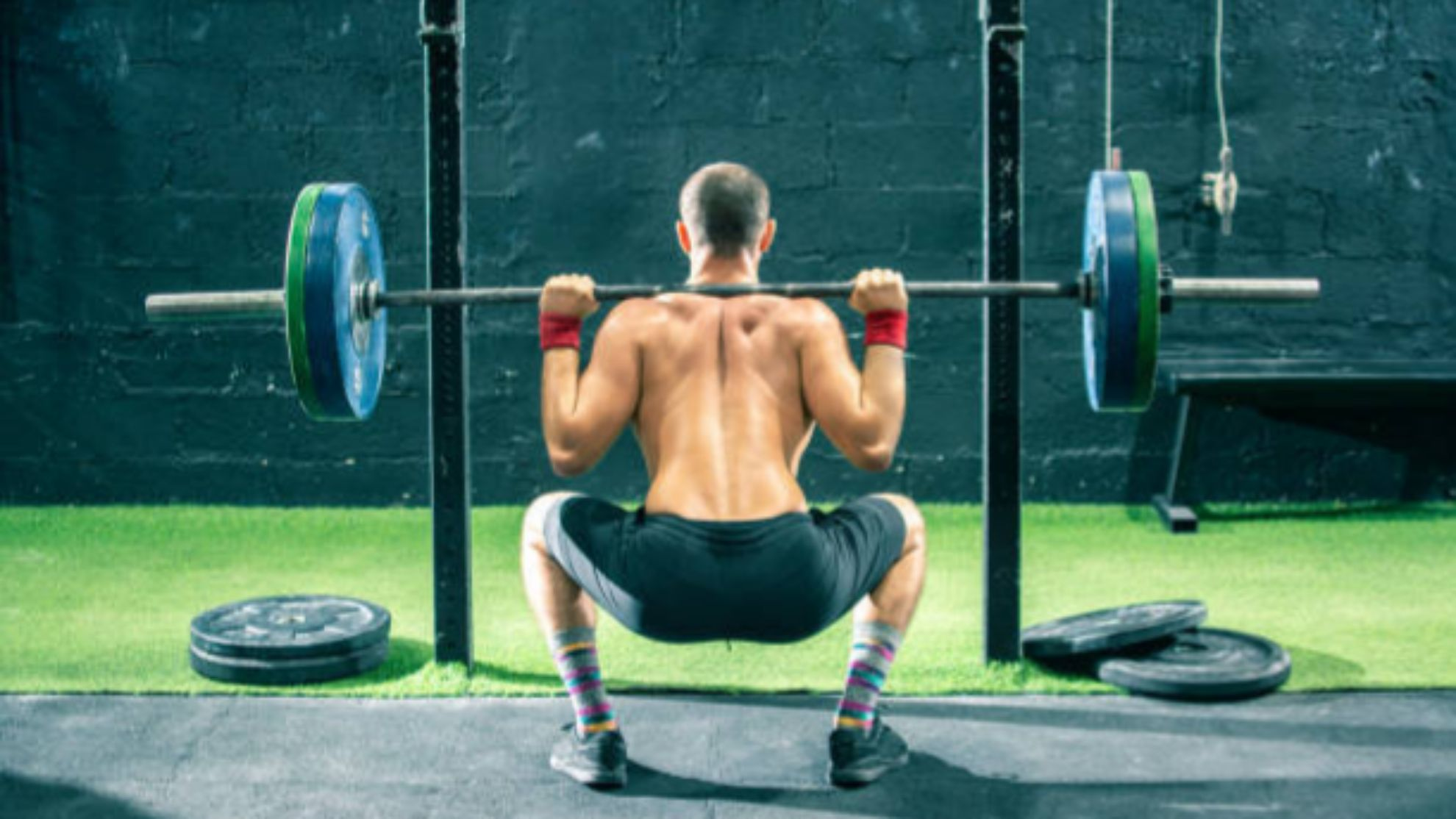
Back squat is a compound exercise that involves lifting a barbell placed on the upper back while squatting down and standing up.
Primarily, it's targeting the lower body muscles, including the quadriceps, hamstrings, and glutes, while also engaging the core and upper body for stabilization.
Benefits/Expected Results
-
Increased lower body strength
-
Improved balance and stability
-
Improved bone density
-
Reduced risk of injury
-
Increased calorie burn
Standard Counts and Frequency
-
2-3 sets of 8-12 reps
-
1-2 times per week
How to Do the Back Squat
-
Stand with your feet shoulder-width apart, toes pointing slightly outward.
-
Place the barbell on your upper back, resting it on your traps.
-
Tighten your core and glutes, bend your knees, and lower your body until your thighs parallel the floor.
-
Keep your weight in your heels and your chest up.
-
Push through your heels to return to the starting position.
11. Standing Calf Raise

The Standing Calf Raise targets the gastrocnemius muscle, which is the larger of the two calf muscles and the soleus muscle.
Benefits/Expected Results
-
Improving the strength and size of the calf muscles
-
Enhancing ankle stability
-
Aiding in athletic performance such as jumping and sprinting
Standard Counts and Frequency
-
Sets of 10-15 repetitions
-
Performed 1-2 times a week
How to Do the Standing Calf Raise
-
Stand with your feet shoulder-width apart, toes pointing forward.
-
Place your hands on your hips or hold onto a stable surface for balance.
-
Raise your heels off the ground and stand on your tiptoes, keeping your knees straight.
-
Hold this position for 1-2 seconds, then lower your heels to the ground.
-
Repeat for the desired number of repetitions.
12. Stability Ball Hamstring Curl
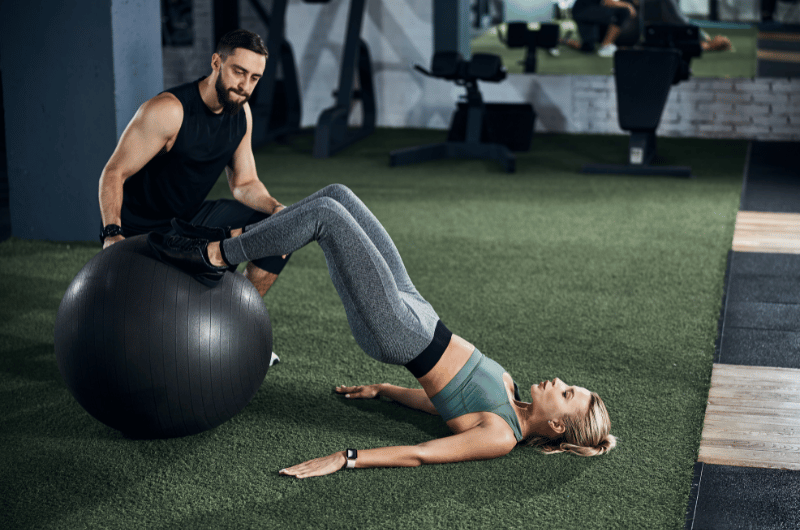
The Stability Ball Hamstring Curl targets the hamstring muscles, which are located on the back of the thigh.
Benefits/Expected Results
-
Improved hamstring strength and endurance
-
Increased hamstring flexibility
-
Reduced risk of a hamstring injury
Standard Counts and Frequency
-
3 sets of 10-12 repetitions
-
Performed 1-2 times a week
How to Do the Stability Ball Hamstring Curl
-
Lie on your back with your feet resting on a stability ball, knees bent at a 90-degree angle.
-
Place your hands on the ground by your sides for stability.
-
Squeeze your glutes and lift your hips off the ground, creating a straight line from your shoulders to your feet.
-
Keep your hips elevated and slowly roll the stability ball towards your body with your feet, bending your knees and bringing your feet towards your glutes.
-
Pause momentarily and then slowly straighten your legs, rolling the stability ball back to the starting position.
-
Repeat for the desired number of repetitions.
13. Supported Single-Leg Deadlift
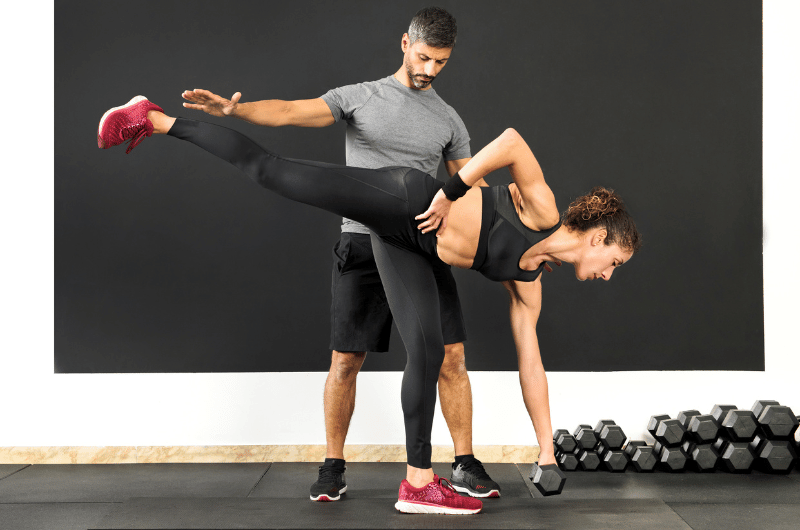
The Supported Single-Leg Deadlift primarily targets the gluteus maximus, as well as the hamstrings, core, and lower back muscles.
Benefits/Expected Results
-
Improved balance, coordination, and hip stability
-
Increased strength and muscle development in the glutes and hamstrings
Standard Counts and Frequency
-
3 sets of 8-10 repetitions per leg
-
Performed 1-2 times a week
How to Do the Supported Single-Leg Deadlift
-
Stand with your feet hip-width apart and place a stable object, such as a chair or wall, in front of you for support.
-
Shift your weight onto your left foot and lift your right foot off the ground slightly, balancing on your left foot.
-
Hinge forward at the hips, reaching your right hand towards the ground and extending your right leg straight back behind you.
-
Keep your core engaged and your back straight as you lower your upper body towards the ground and raise your right leg, creating a straight line from your head to your right heel.
-
Pause for a moment and then return to the starting position.
-
Repeat for the desired number of repetitions before switching to the other leg.
14. Leg Extension
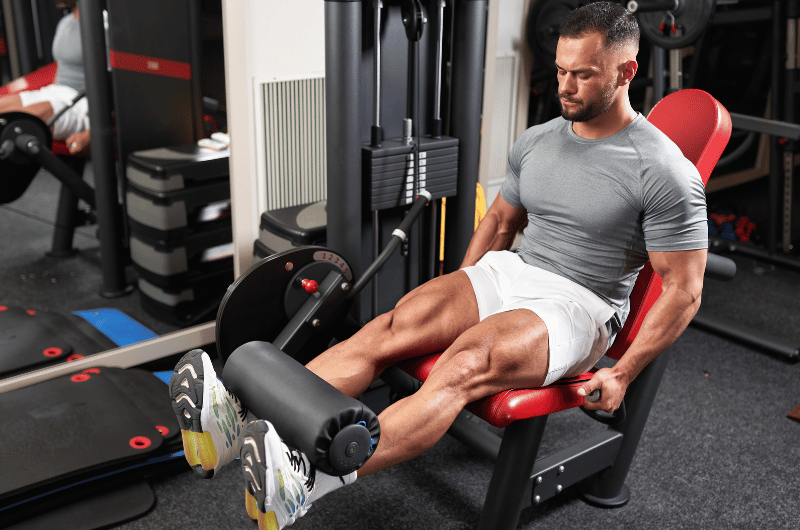
The leg extension is a strength training exercise that targets the quadriceps muscles in the front of the thigh.
It involves extending the legs against resistance while seated on a leg extension machine.
The exercise also recruits the glutes and hamstrings to a lesser degree.
Benefits/Expected Results
-
Improved quadriceps strength
-
Improved knee joint stability
-
Improved athletic performance in sports such as running, jumping, and cycling
-
Beneficial for individuals recovering from knee injuries or surgeries
Standard Counts and Frequency
-
Perform 3-4 sets of 8-12 repetitions with moderate to heavy resistance.
-
Rest for 60-90 seconds between sets.
How to Do the Leg Extension
-
Sit on a leg extension machine with your feet under the padded bar and adjust the pad to the height of your shins.
-
Place your hands on the handles provided for support.
-
Exhale and extend your legs until they are straight, contracting your quadriceps muscles.
-
Hold the contraction for a second and slowly lower your legs back to the starting position while inhaling.
15. Sled Push
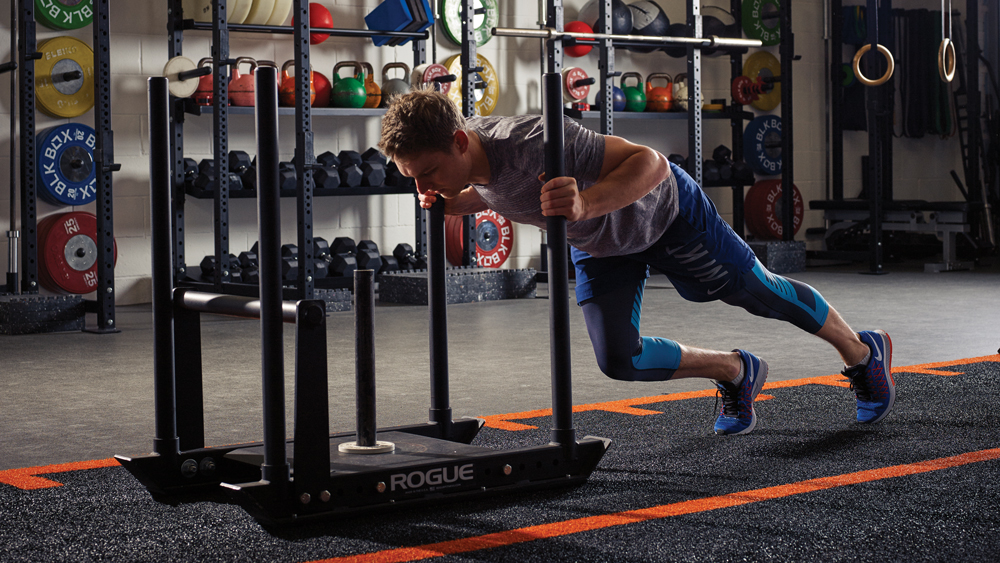
The sled push is a functional exercise that primarily targets the lower body muscles, including the quadriceps, glutes, hamstrings, calves, and hip flexors.
It also recruits the core muscles, shoulders, and triceps to a lesser degree.
Benefits/Expected Results
-
Improves lower body strength, power, and endurance
-
Improves cardiovascular fitness, increases calorie burn, and stimulates muscle growth
-
Ideal for athletes looking to improve their performance in sports such as football, hockey, and rugby.
Standard Counts and Frequency
-
3-4 sets of 30-60 seconds with moderate to heavy resistance
-
Rest for 1-2 minutes between sets
How to Do the Leg Extension
-
Load a sled with weights and stand behind it with your feet shoulder-width apart.
-
Place your hands on the handles provided and push the sled forward using your legs and core muscles, keeping your back straight and your head up.
-
Continue pushing the sled until you reach the desired distance or time, then rest and repeat.
How to Warm Up Before Training Legs: Sample Exercise Order
Warming up before your leg day workout is essential to avoid injury and prepare your muscles for the workout ahead.
Consider using this sample lower body warm-up routine before training.
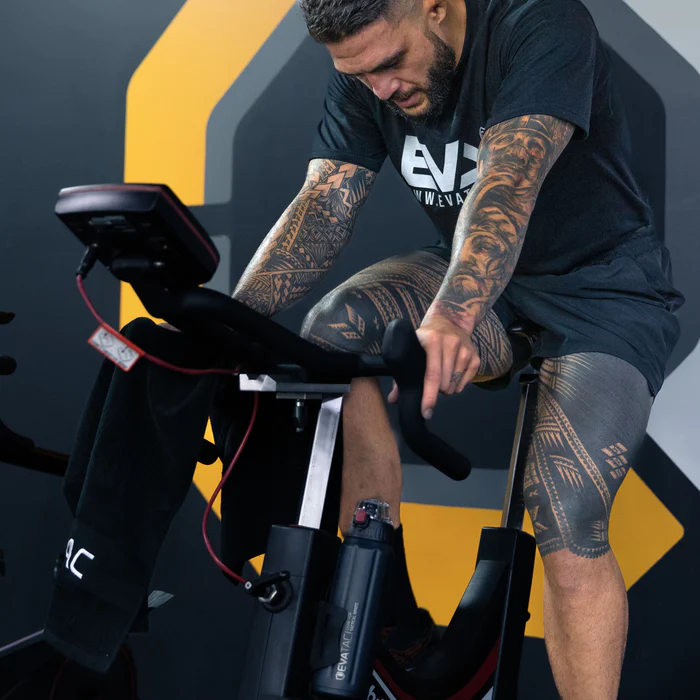
Cardiovascular Exercise
Start with five to ten minutes of light cardio to increase your heart rate and warm up your body.
You can use a treadmill, stationary bike, or jump rope for this.
Foam Rolling
Foam rolling is a form of self-myofascial release that helps to release tight muscles and knots.
You can foam roll your glutes, quads, hamstrings, and calves for 30-60 seconds each.
Dynamic Stretching
Dynamic stretching involves moving your body through a range of motion to increase your flexibility and prepare your muscles for the workout.
Some dynamic stretching exercises you can do include leg swings, walking lunges, and high knees.
Activation Exercises
Activation exercises help to "wake up" the muscles you'll be working on during your leg day workout.
Some activation exercises you can do include glute bridges, clamshells, and lateral band walks.
Beginner Leg Day Workout: Sample Leg Day Workouts For Weight Loss
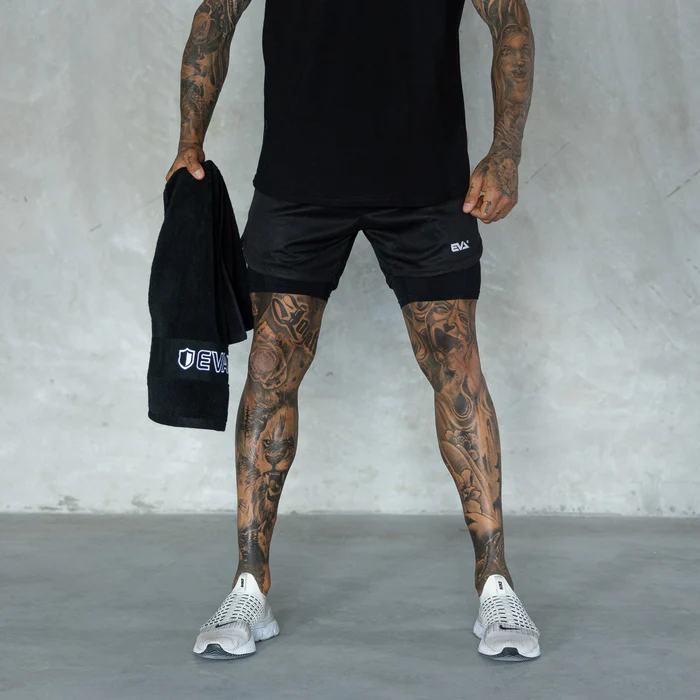
If you're new to working out or just starting a weight loss journey, it can be intimidating to know where to start with leg day workouts.
Here's a beginner-friendly leg day workout you can do to get started.
-
Bodyweight Squats - 3 sets of 12-15 reps
-
Walking Lunges - 3 sets of 10-12 reps per leg
-
Leg Press - 3 sets of 12-15 reps
-
Seated Leg Curl - 3 sets of 12-15 reps
-
Calf Raises - 3 sets of 15-20 reps
Remember to use proper form and start with lighter weights or just the bar if you're just starting out.
As you progress, you can increase the weight and intensity of your leg day workouts.
Delayed onset muscle soreness (DOMS) will be quite painful throughout your first handful of sessions. Don't let that discourage you from further workouts as it will get better.
Leg Day Without Squats: Sample Bodybuilding Program To Build Bigger Legs
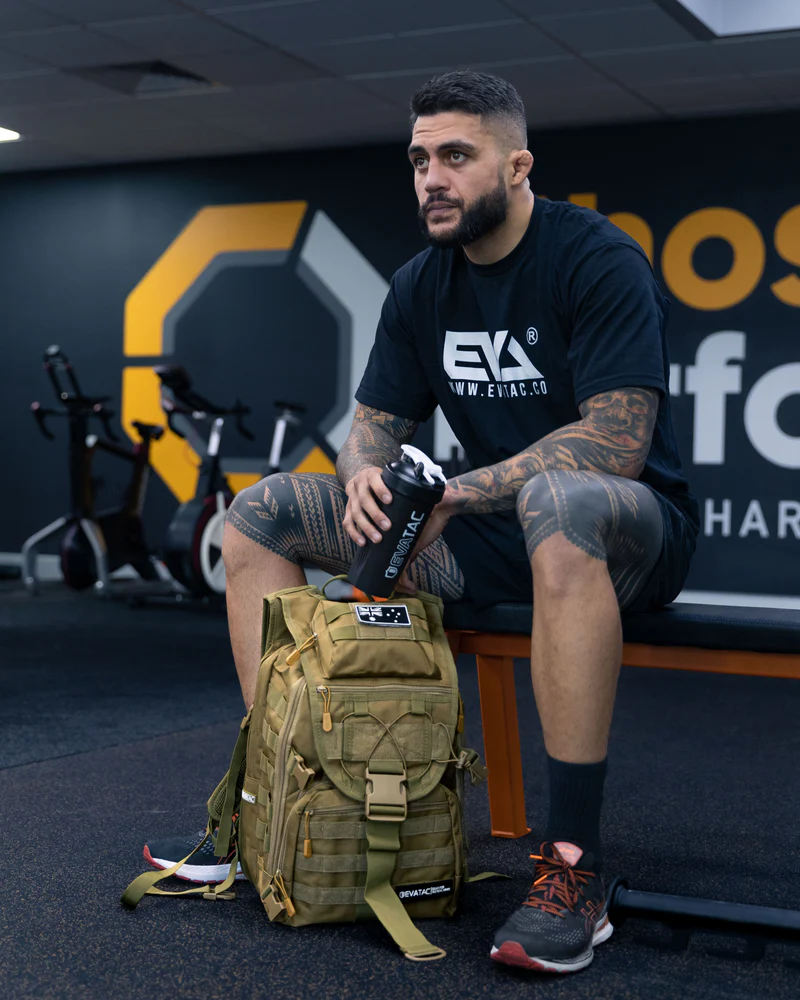
If you're looking to build bigger legs but don't want to do squats, don't worry!
There are plenty of other leg exercises you can do to target your quads, hamstrings, and glutes.
You can follow a sample bodybuilding program to build bigger legs without squats.
-
Leg Press - 4 sets of 8-10 reps
-
Romanian Deadlift - 4 sets of 8-10 reps
-
Bulgarian Split Squat - 3 sets of 10-12 reps per leg
-
Standing Calf Raise - 4 sets of 12-15 reps
-
Leg Extension - 3 sets of 12-15 reps
Remember to increase the weight and intensity of your leg day workouts as you progress.
You can also incorporate advanced techniques like drop sets and rest-pause sets to push your muscles to the limit.
5 Tips for Your Leg Day Workout Routine
To get the most out of your leg day workouts, there are additional tips you can follow beyond selecting the best exercises for your goals.
Here are some more tips that can help.
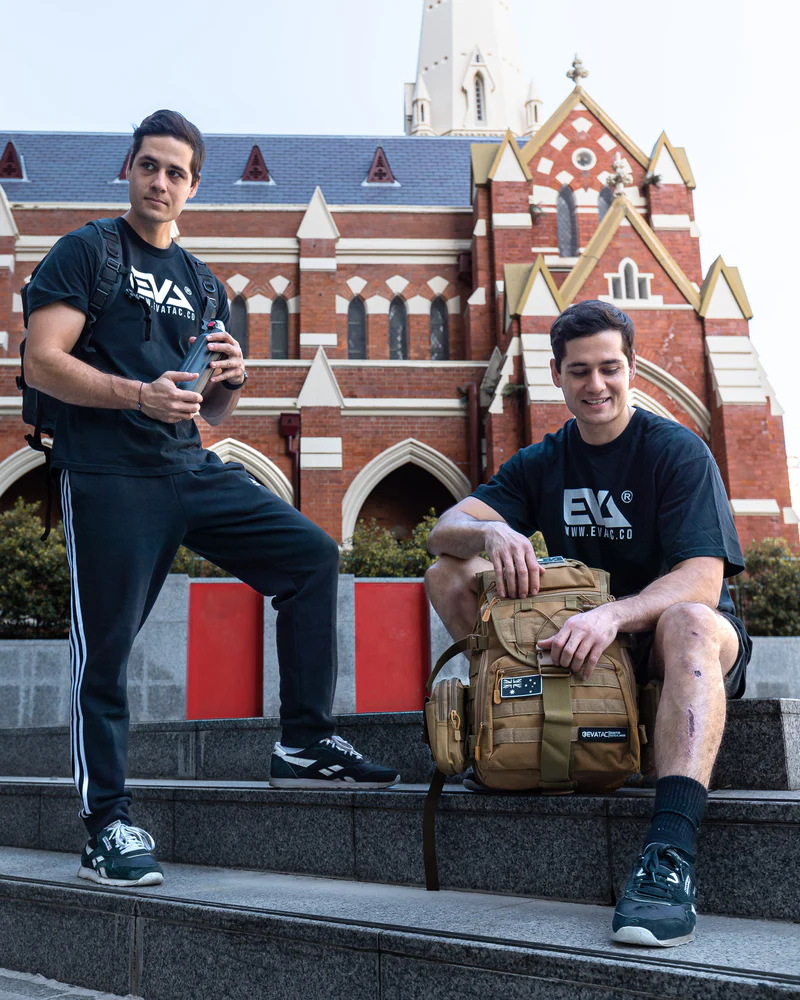
1. Use Machines to Drive Intensity and Volume
For greater muscle growth, machines enable you to increase the weight and volume of your leg day workouts.
For those who struggle performing squats with proper form, utilizing machines like the leg press and hack squat can increase overall training intensity while providing a safer alternative.
2. Incorporate Eccentric-Accentuated Reps and Positional Pauses
Eccentric-accentuated reps involve slowing down the movement's eccentric portion (lowering phase), while positional pauses involve holding the bottom position of the exercise for a few seconds.
Applying these methods can boost muscle tension and promote muscle growth.
Lowering the weight with control during a squat is important before explosively pushing back up to the starting position.
To increase time under tension and boost muscle engagement, try holding the bottom position of a lunge or split squat for a few seconds instead.
3. Vary Your Foot Position
The position of your feet during exercises like squats and lunges can significantly impact which muscles are targeted.
By using a wider stance, the outer portion of the quadriceps is targeted, whereas a narrower stance targets the inner portion of the quads during squats.
Experimenting with different foot positions can help you target specific muscle groups more effectively.
4. Don't Forget About Your Calves
Your calf muscles are frequently disregarded, however, they are a crucial component of your lower body and have an important function in your leg strength and appearance.
Don't forget to include exercises like standing calf raises and seated calf raises in your leg day workouts.
5. Prioritize Recovery
To avoid injury and achieve optimal results, recovery should be a top priority after a leg day workout.
After exercising, ensure to stretch and foam roll your legs, and maybe take a couple of rest days following intense leg workouts to recover and strengthen your muscles.
Incorporating these additional tips into your leg day workout routine can maximize your muscle growth, strength, and overall performance.
Best Leg-Day Exercises [TOP 15]!
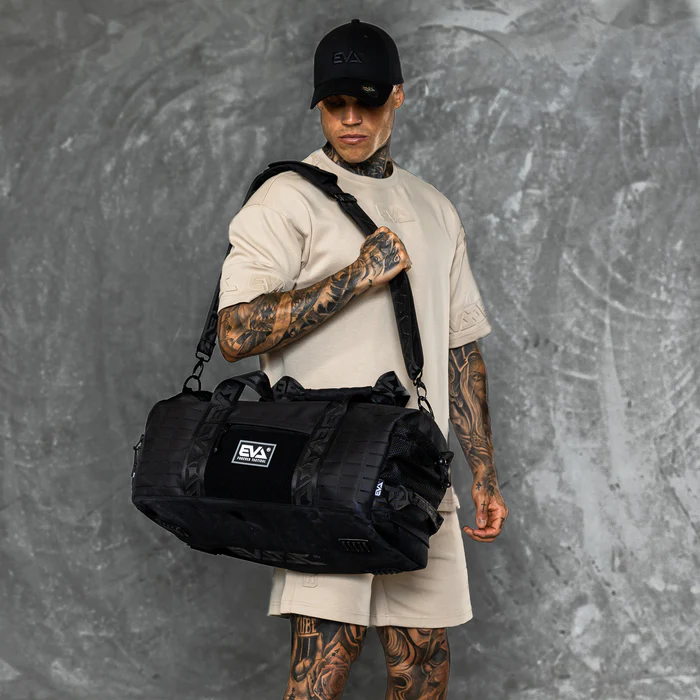
Are you looking for a complete leg workout to build strong, powerful legs?
Look no further than these 15 best leg exercises!
-
Jump Rope: This is a great warm-up exercise that also helps to improve coordination and cardiovascular health.
-
Walking Lunge: A classic exercise that targets the quadriceps, hamstrings, and glutes.
-
Landmine Goblet Squat: This variation of the traditional goblet squat helps to activate the core while also targeting the legs.
-
Barbell Hip Thrust: A great exercise for building strong glutes and improving hip extension.
-
Romanian Deadlift (Barbell): Targets the hamstrings and glutes while also helping to improve hip mobility.
-
Seated Leg Press: A machine-based exercise that targets the quadriceps and glutes.
-
Hack Squat: Another machine-based exercise that targets the quadriceps and glutes.
-
Reverse Lunge: Targets the same muscles as the walking lunge but with a different movement pattern.
-
Bulgarian Split Squats: Targets the quadriceps and glutes while also improving balance and stability.
-
Back Squat: A compound exercise that targets the quadriceps, hamstrings, and glutes.
-
Standing Calf Raise: Targets the calves and helps to improve ankle stability.
-
Stability Ball Hamstring Curl: A bodyweight exercise that targets the hamstrings while also improving core stability.
-
Supported Single-Leg Deadlift: A unilateral exercise that targets the hamstrings and glutes while also improving balance and stability.
-
Leg Extension: A machine-based exercise that isolates the quadriceps.
-
Sled Push: A functional exercise that targets the entire lower body while also improving cardiovascular health.
To maximize your leg day workouts, consider incorporating machines like the leg press and hack squat to drive intensity and volume.
You can also try eccentric-accentuated reps and positional pauses to increase muscle tension and stimulate muscle growth.
And for all your leg day workout needs, check out Evatac fitness gear and equipment.
With their quality products, you can take your leg day workouts to the next level and achieve your fitness goals. You can expect high-quality affordable equipment with a wide array of choices. So, you can surely get one that not only suits your needs but also your preferences.
So what are you waiting for? Let's get those legs pumping and take your fitness journey to new heights!
Try our Evatac fitness gear and equipment and see the difference yourself.
As they say, "Leg day is the best day."



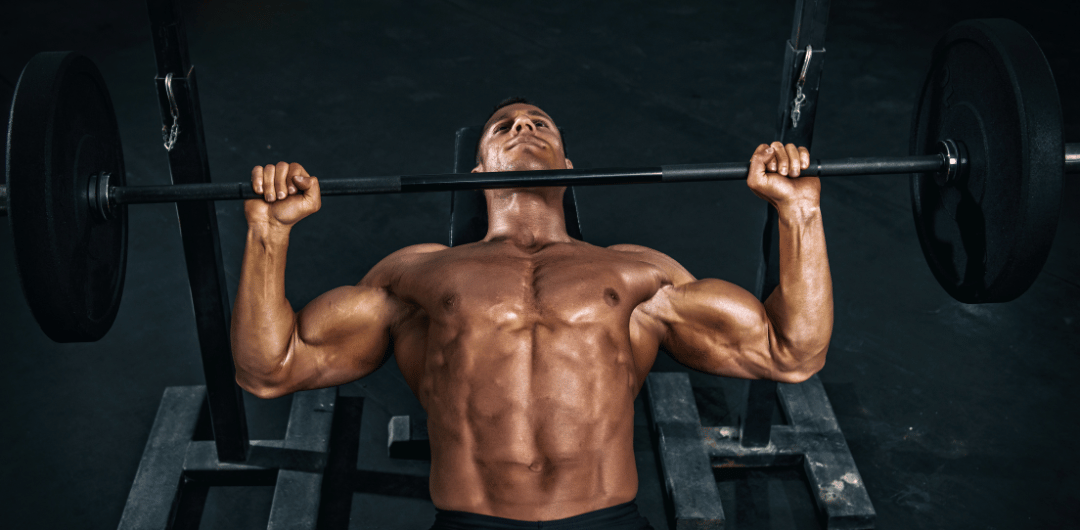
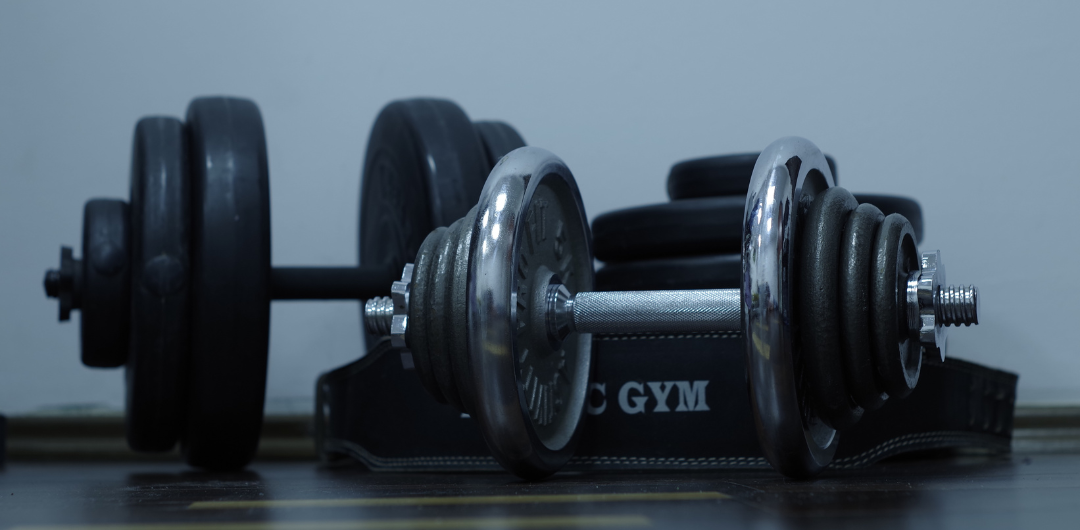
Leave a comment
This site is protected by reCAPTCHA and the Google Privacy Policy and Terms of Service apply.